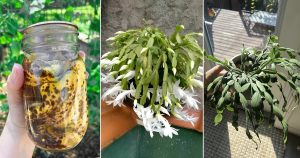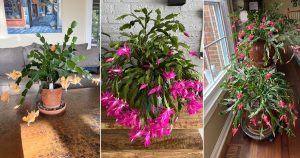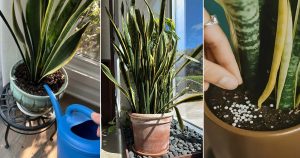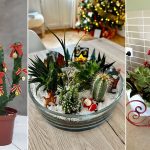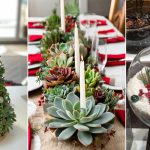Planning to create a display of incredible plants in the same pot? Then first, check out this list of Succulents You Shouldn’t Grow Together!
You can’t just throw all your favorite succulents into one pot and hope for the best. Some of them don’t get along, and pairing them up can lead to stress, rot, or stunted growth. Here’s your cheat sheet of succulents you shouldn’t grow together.
Succulents You Shouldn’t Grow Together
Note: Succulents may look peaceful, but when grown together in the same pot or garden, their different light, water, and root space requirements can cause stress, rot, or stunted growth. It’s not about fighting—it’s just that their needs don’t match.
1. Aloe Vera and Echeveria

While both are popular and easy to grow, Aloe Vera has more of an aggressive growth habit. It boasts of thick root system, so you will often see it overflowing from containers. Echeverias, on the other hand, have more delicate roots and compact rosettes that need more space in their pots.
Aloe’s faster growth can crowd out and stress Echeveria, stunting its growth or even leading to root rot due to overwatering conflicts.
Tip: If you still want to grow both, keep them in separate pots placed close together for visual appeal without the competition.
2. Haworthia and Sedum

While the combination of Haworthia and Sedums sounds quite enticing, this pairing hardly has a future! The main reason is that their needs just do not make sense together.
Why, you ask? Well, Haworthias prefer a bit of shade and consistent, infrequent watering, while Sedums love bright, direct sunlight and can go much longer without water. When placed together, one of them always suffers, and it is usually the Haworthia, which ends up scorched or dried out due to Sedum’s more extreme needs.
3. Jade plant and Living Stones
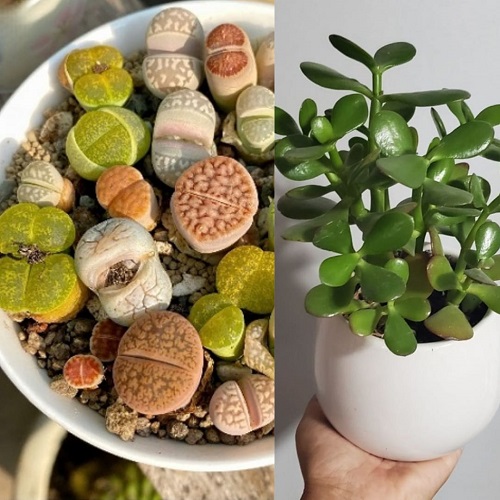
Even at a glance, this combo seems off—and it is.
The Jade Plant grows into a woody shrub and needs more frequent watering during its active phase. Living Stones (Lithops) are slow, small, and need dry conditions for survival. In the same pot, Jade’s needs just become front and center, and keep the Lithops on the sidelines, often leading to overwatering and rot.
Caution: Lithops enters dormancy when jade is in full growth. Their calendars don’t match at all!
4. Kalanchoe & Graptopetalum
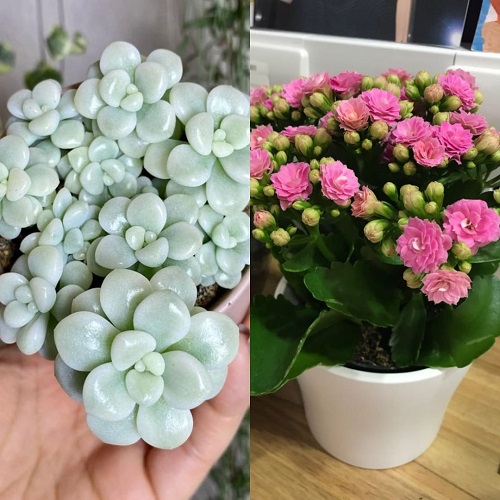
This combo looks cute, but they’re not compatible roommates.
Firstly, Kalanchoes are fast growers. They have quite fibrous roots, which often dominate the pot they are kept in and drain the soil of nutrients. If you keep Graptopetalum in the same pot, it won’t be able to keep up because being slower and more delicate.
To make things worse, their watering needs vary, making it tough to maintain a balanced routine for both. And in conclusion, Graptopetalum ends up stressed and undernourished.
5. Gasteria and Hens & Chicks
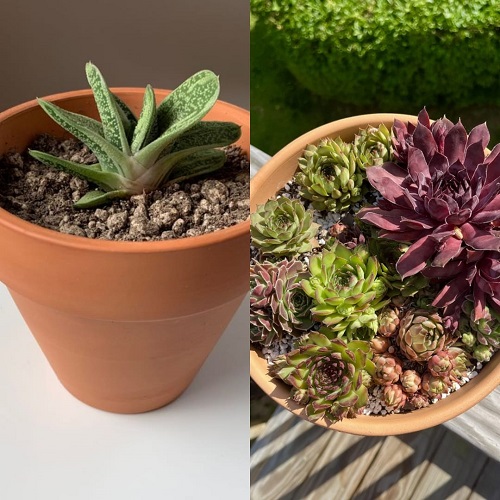
You sure knew we would be talking about Sempervivums! After all, when you are creating a succulent display, you simply can’t skip over them. But one plant that does not go along with Hens and Chicks is the Gasteria.
The reason for that is Sempervivums thrive in cooler temperatures and need a winter dormancy period; they can sometimes tolerate frost. Meanwhile, Gasteria, being more tender and delicate, prefers to be grown in warm temperatures throughout the year.
Their soil, water, and light preferences clash enough to stress one or both plants.
6. String of Pearls and Pachyphytum
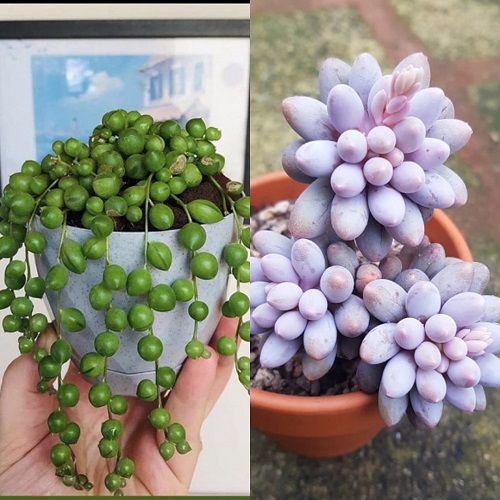
Senecio varieties like String of Pearls need excellent drainage and dry quickly in hanging pots or shallow containers. Pachyphytum, which is more compact and fleshy, holds onto water longer and is prone to rot if kept in the dry and breezy conditions favored by Senecio.
Basically, this contrast in water-retaining abilities and need for ventilation makes this a risky pairing.
Tip: Use different container types—hanging for String of Pearls and deep pots for Pachyphytum—to suit their habits.
7. Elephant Bush and Adromischus

Regardless of whether you have heard of Adromischus before or are hearing about this succulent for the first time, know that you can’t grow it alongside Elephant Bush!
Portulacaria grows fast and upright, casting shade and demanding water more frequently. Adromischus, on the other hand, is extremely slow-growing and sensitive to excess water.
If you try to plant them in the same pot, you will find that the Elephant Bush dominates the space, absorbs most of the light, and causes rot in the Adromischus due to incompatible watering needs.
8. Cotyledon and Barrel Cactus

Now, in this pairing, one is a cactus and one is a succulent. Even if we specifically talk about the Cotyledon tomentosa, or commonly, the Bear Paw, which needs more water, you will see how this pairing can never work out.
Barrel cacti demand intense sun and extremely dry soil. Soft-leaved succulents like the Bear Paw scorch easily and prefer more temperate light. The cactus’s water needs are much lower, and its spines also physically damage soft succulents if placed too close.
Caution: Always give cacti like Barrel their own dry zone, or someone’s going to get hurt—literally.
9. Aeonium and Cactus (Mammillaria or Echinopsis)
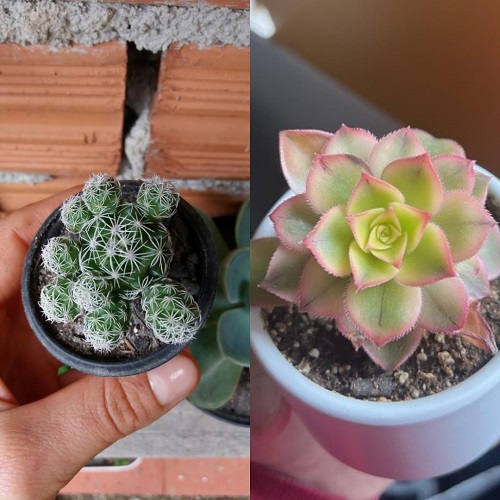
Finishing with another cactus-succulent pairing, there are several reasons that you shouldn’t grow cacti of either the Mammillaria or the Echinopsis genus together with Aeonium.
Aeoniums go dormant in summer and actively grow in winter—basically the opposite of most cacti. Cacti like Mammillaria or Echinopsis need a dry, warm dormancy in winter. Their seasonal rhythms are incompatible, and watering schedules will never align properly.
So these are the pairs of succulents that you simply must not grow together. Do you know any more of such incompatible succulent pairs? Let us know in the comments below!


